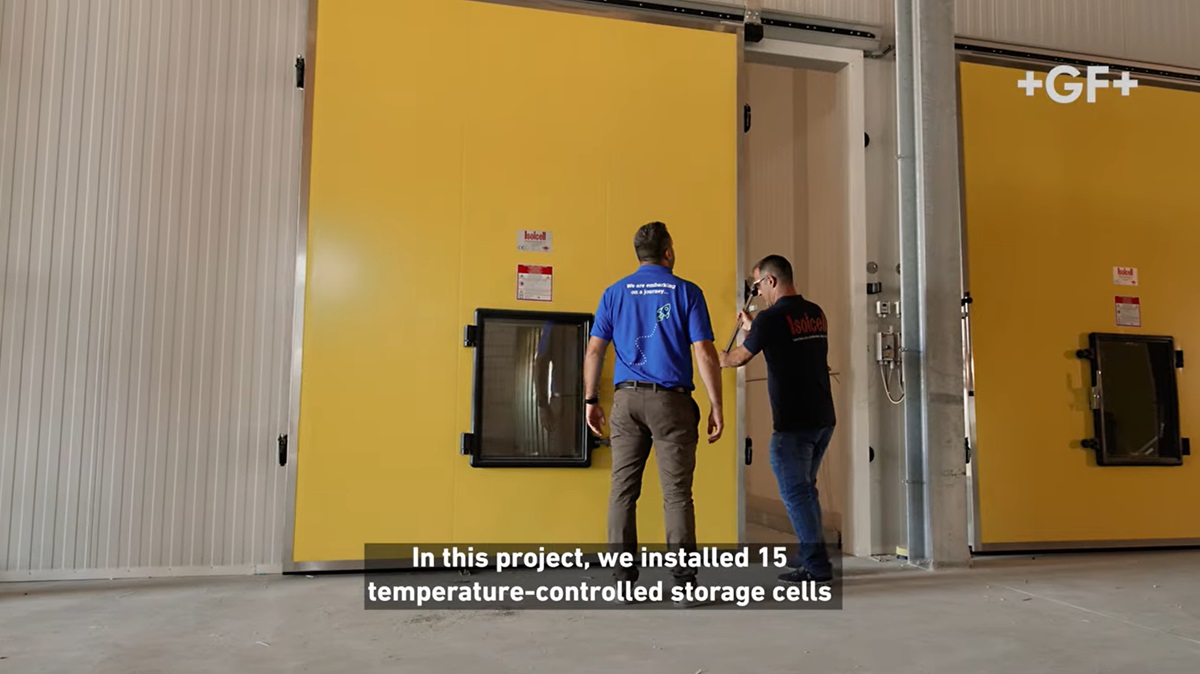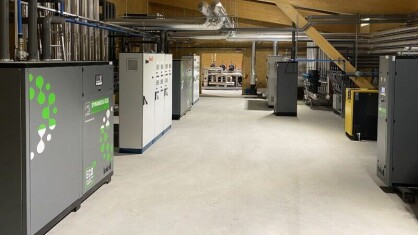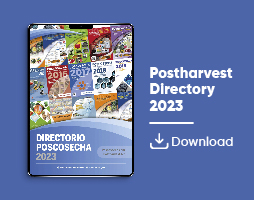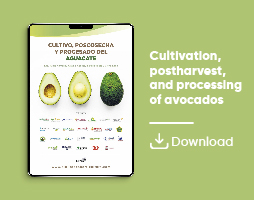Cooling and CA
CA, ULO and DCA-CF storage technologies for fresh fruits
Each plant product has a metabolism of its own. Therefore fruit is alive and breathes, thus consuming oxygen, not only while growing in the field, but even also it is harvested. Its respiration process involves the breakdown and oxidation of carbohydrates such as sugars and acids, which are stored in the plant?s tissues. The end products of breathing are: heat, carbon dioxide, water vapor and some aromatic compounds. The faster a fruit breathes, the faster it ?ages?, thus shortening its ?storage life?. For a long time, refrigeration was the only method used to keep fruit and vegetables fresh. It was not until 1821 that Berard, a plant physiology researcher, discovered that fruit stored in a low oxygen environment had a slower metabolism. At the beginning of the 20th century, researchers Kidd and West scientifically defined the concepts of Controlled Atmosphere storage, but CA only became available on the market at the end of the ?50s, simultaneously in Europe and in the US. Both reducing the storage room?s oxygen level and raising its carbon dioxide level, significantly lower the product?s respiratory activity.
26 June, 2018
Each plant product has a metabolism of its own. Therefore fruit is alive and breathes, thus consuming oxygen, not only while growing in the field, but even also it is harvested. Its respiration process involves the breakdown and oxidation of carbohydrates such as sugars and acids, which are stored in the plants tissues. The end products of breathing are: heat, carbon dioxide, water vapor and some aromatic compounds. The faster a fruit breathes, the faster it ages, thus shortening its storage life. For a long time, refrigeration was the only method used to keep fruit and vegetables fresh. It was not until 1821 that Berard, a plant physiology researcher, discovered that fruit stored in a low oxygen environment had a slower metabolism. At the beginning of the 20th century, researchers Kidd and West scientifically defined the concepts of Controlled Atmosphere storage, but CA only became available on the market at the end of the 50s, simultaneously in Europe and in the US. Both reducing the storage rooms oxygen level and raising its carbon dioxide level, significantly lower the products respiratory activity. Controlled Atmosphere, combined with lower temperatures, acts more in depth in the metabolism of plants, for example by reducing the fruits production of ethylene, by blocking the breakdown of chlorophyll (the green color), by delaying the pectin hydrolysis (that affects the firmness of the pulp), and by slowing the breakdown of vitamins and acids. From a commercial point of view, this not only maintains the organoleptic properties of the products but also reduces losses due to pathogens (fungi) and to common plant disorders such as common and senescent scald and cold damage in general. These advantages become even more evident by using the new and more advanced CA techniques, first applied in Italy by ISOLCELL, and the DCA-CF technology which Isolcell exclusively distributes worldwide. These are the Ultra Low Oxygen (ULO) and DCA - CF techniques (Dynamic Controlled Atmosphere with Chlorophyll Fluorescence). The former preserves products in an environment with a percentage of oxygen around 1%. The choice of the type of atmosphere to be used depends on the product (species, variety) and on the products physiological condition at harvest. Compared to traditional CA storage, the advantage of ULO is a further reduction (30%) of the respiratory metabolism. The latest breakthrough storage technology, DCA - CF (Dynamic Controlled Atmosphere with Chlorophyll Fluorescence), further improves the quality of fruit during storage. A quality until now unimaginable for stored products can now be achieved by means of dynamic adaptation of a controlled atmosphere, adjusted on the basis of the physiological condition of the product to store and of its biological activity over time. This method was invented and patented by a Canadian Government Research Institute and further developed at the Laimburg Agricultural and Forestry Research Institute. In 2003, Isolcell started to apply the technology in commercial storage cells and currently holds the exclusive worldwide distributorship. Isolcell storage technologies for fresh fruits: Nitrogen generators- PSA NL, re-engineering an established technology- ISOSEP, hollow - fibre membranes- ADOX N2, molecular sieves (CMS) generator running on low pressure CO2 scrubbers- DynamiCO2 Eco, intelligent CO2 adsorber Ethylene converters- Deoxyl LE, ethylene converters- Typhoon and Purethyl, ethylene adsorbers Environmental sanitizers- Aeroclean, Isolcell's new ionizer CO2, O2, C2H4 analyzers- Multiplex, CO2 and O2 centralized analyzer capable of detecting second decimal - Seleca, CO2 and O2 analyzer- Ethyscan, ethylene analyzers, extremely precise and easy to use - Oxyguard/Carboguard/Ethyguard, oxygen/carbon dioxide/ethylene analyser- Oxycarb 6, portable electronic analyzer Measuring systems- PD Controller, electronic pressure controller- Sentinel, electronic weight loss monitor- Amilon, automatic starchmeter for controlling the ripeness of apples and pears Plant automation- Isosoft, automatic control software Accesories- Headers- Overpressure valve Experimental facilities PAL-STORE systems Storage methods- Isostore (DCA-CF), the dynamic controlled atmosphere by using fluorescence sensors- ILOS (DCA-Ethanol), controls the accumulation of alcohol inside the fruit in order to prevent scald- Storefresh (DCA-RQ), new frontier of respiration control Humidification plants- Isofog About the Storage DivisionThe Storage Division of Isolcell studies, designs and manufactures solutions for the fruit and vegetable storage market. It uses the most advanced controlled atmosphere technology to maintain the quality of foodstuffs and lengthen their post-harvest storage life. In addition, Isolcell designs and builds turnkey storage warehouses, that is polyurethane and metal sheet sandwich thermal insulated panels, insulated doors, gas-tightness, industrial refrigeration and provision of all the equipment needed to monitor the warehouses atmosphere. This is the historic Division of Isolcell which can boast plants installed worldwide. About IsolcellSince 1958, Isolcell studies and creates plants that use the technology of the Generated and Controlled Atmosphere. They were the first in Europe to develop and apply these technologies as a method of preservation of food, then extending the use of controlled atmospheres like technology that creates an advantage for quality and technology in the process in different production sectors: from pharmaceuticals to chemicals, from plastic moulding to electro-magnetic, oenology to laser cutting, from fire prevention to protection and conservation of the artistic heritage. They are acknowledged as world leaders, and they are part of an industrial group owned by Finanziaria Unterland. S.p.A. Isolcell Company, present worldwide with a network of distributors and resellers. They operate according to the highest quality standards: They are ISO 9001, ISO 14001, OHSAS 18001 and the range of our products complies with the strictest European and international Directives. Their strength is the ability to offer highly customized, reliable solutions and that reflects, while sometimes anticipates, the state of the art available technology.











